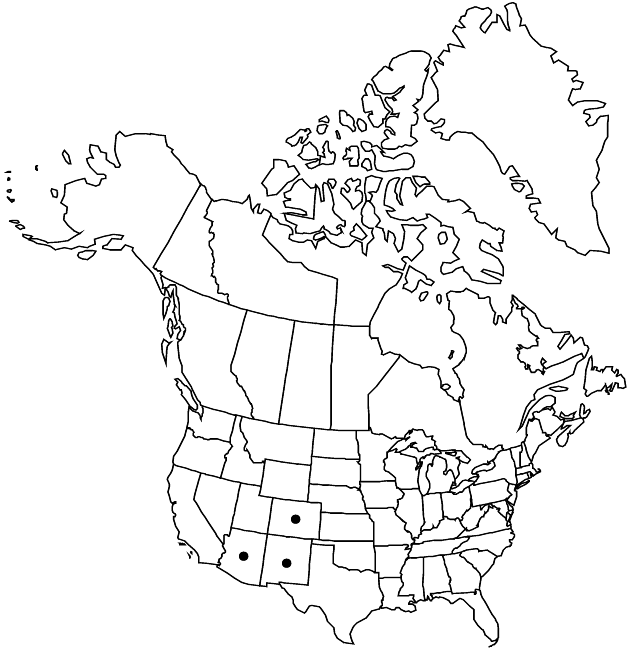Hymenoxys brandegeei
Madroño 10: 159. 1950.
Perennials, 8–24 cm (polycarpic, often with sparingly branched, woody caudices). Stems 1–3(–10), green throughout to purple-red-tinted proximally or distally to throughout, unbranched distally, ± hairy. Leaves: blades simple or lobed (lobes 3–7), ± hairy, gland-dotted (basal leaf bases sparsely, if at all, long-villous-woolly); mid leaves usually simple, sometimes lobed (lobes 3, terminal lobes 1.5–3.5 mm wide). Heads 1–3(–10) per plant, borne singly. Peduncles 2–5 cm, ± hairy, tomentose distally near involucres. Involucres hemispheric to subglobose, 13–16 × 19–23 mm. Phyllaries in 2–3 series, subequal; outer 10–20, basally connate 1/5–1/3 their lengths, lanceolate, 10–13.5 mm, apices rounded to acute; inner 12–20+, lanceolate to elliptic to obovate to oblanceolate, 6–10 mm, apices acuminate. Ray florets 14–23; corollas yellow, 14–23 × 3.5–7.5 mm. Disc florets 150–250+; corollas 4.1–5.2 mm. Cypselae obpyramidal to narrowly obpyramidal, 2.8–3.1 mm; pappi of 5–6 lanceolate-aristate scales (2.7–)4.1–4.3 mm. 2n = 30.
Phenology: Flowering Jul–Sep.
Habitat: Meadows, often above timberline
Elevation: 2800–4100 m
Distribution

Ariz., Colo., N.Mex.
Discussion
Selected References
None.